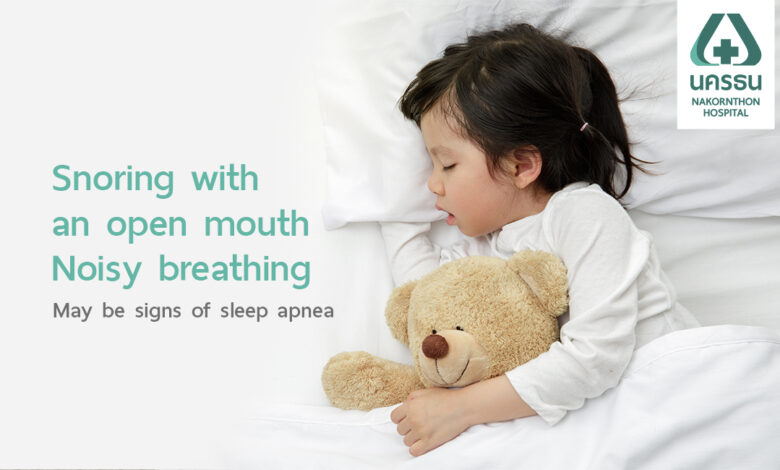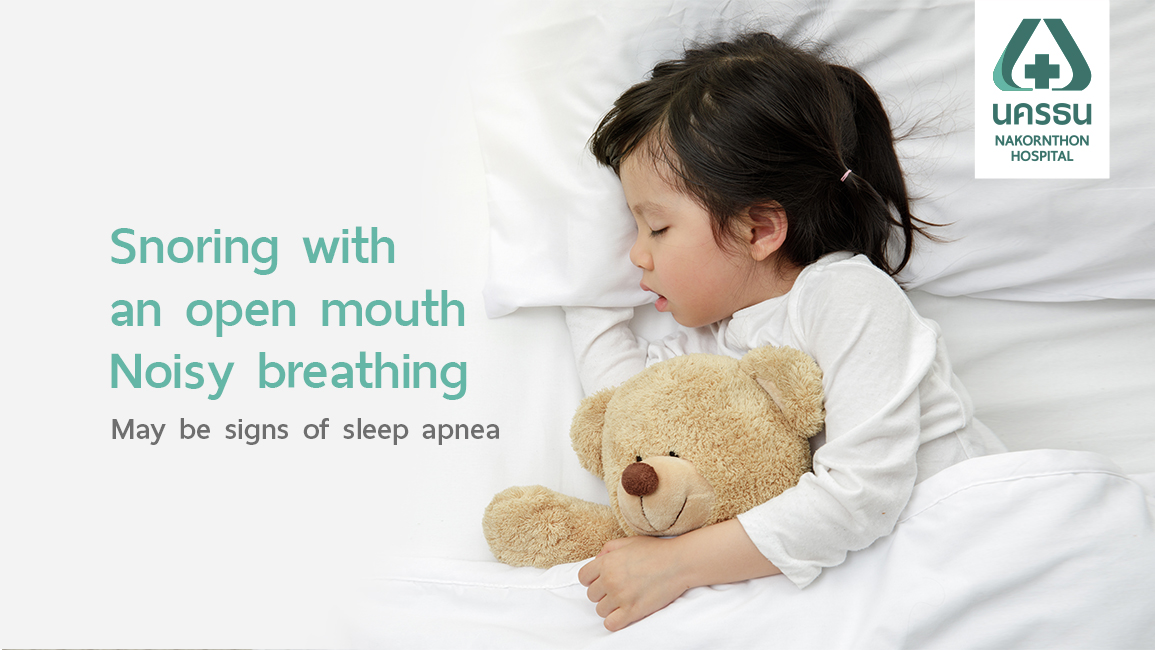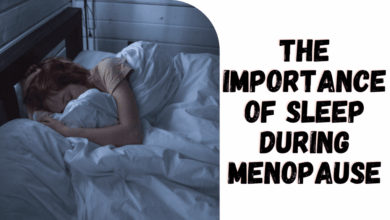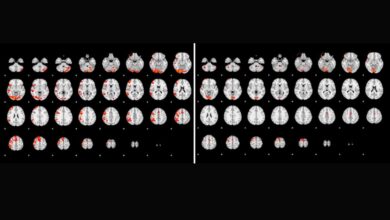
Children who snore are more likely to develop learning disabilities, a concerning link that deserves our attention. This issue delves into the potential correlation between disrupted sleep, often manifested as snoring, and the development of learning challenges in children. We’ll explore the science behind this connection, examining potential mechanisms, existing research, and the implications for educators and parents.
The potential health implications of chronic snoring in children are significant, extending beyond just noisy nights. This overview will examine the impact on developmental milestones, comparing typical sleep patterns of healthy children to those with chronic snoring. Understanding the potential physiological mechanisms linking snoring to learning disabilities is crucial, and we will discuss oxygen saturation during sleep, potential inflammatory responses, and how sleep disruption affects brain development and cognitive functions.
Introduction to Snoring and Learning Disabilities
Snoring, a common sound during sleep, is often associated with upper airway obstruction. In children, this can manifest as a persistent and loud noise during sleep, sometimes accompanied by pauses in breathing, a condition known as sleep apnea. While snoring itself isn’t necessarily a serious health concern, chronic snoring in children can have significant implications for their overall health and development.
This post explores the potential links between chronic snoring and learning disabilities in children, delving into the science behind these connections and providing insights into the current understanding of these issues.Chronic snoring in children can disrupt their sleep patterns, leading to fatigue, difficulty concentrating, and behavioural problems. This disruption of sleep can also affect their physical and cognitive development.
The intricate interplay between sleep, brain development, and learning capabilities underscores the importance of addressing snoring issues in children promptly and effectively. The link between snoring and potential learning disabilities isn’t fully understood, but research is shedding light on possible mechanisms.
Defining Snoring in Children
Snoring in children is characterized by the vibration of the soft tissues in the upper airway during sleep. This vibration typically results in a distinctive snoring sound, often more pronounced during sleep stages characterized by reduced muscle tone. Factors contributing to snoring in children can include enlarged tonsils and adenoids, nasal congestion, and certain anatomical features of the airway.
The severity of snoring can vary considerably, ranging from mild, occasional sounds to loud, persistent noises.
Potential Health Implications of Chronic Snoring in Children
Chronic snoring in children can have several negative health consequences. Sleep disturbances associated with snoring can impact growth and development, leading to fatigue, irritability, and difficulties with concentration and attention. More severe cases, particularly those involving sleep apnea, can result in lower oxygen levels in the blood, impacting brain function and potentially contributing to learning difficulties. Furthermore, chronic snoring can increase the risk of cardiovascular problems later in life.
Developmental Milestones and Snoring
Children typically reach key developmental milestones at specific ages. These milestones encompass physical, cognitive, and social-emotional development. Snoring, especially when chronic, can disrupt these developmental processes. Interrupted sleep can affect memory consolidation, impacting learning and academic performance. For instance, a child struggling to consolidate memories from the day due to disrupted sleep might show difficulties in recalling information or exhibiting poor performance in school.
Understanding Learning Disabilities
Learning disabilities are neurodevelopmental disorders that affect a child’s ability to acquire, process, or use information. These conditions can manifest in various ways, impacting different cognitive skills such as reading, writing, math, and reasoning. Common learning disabilities include dyslexia (difficulty with reading), dysgraphia (difficulty with writing), and dyscalculia (difficulty with math). These conditions are characterized by difficulties in specific academic areas, often despite adequate intelligence and instruction.
Learning disabilities are diagnosed based on standardized testing and observations of academic performance and behaviour.
Comparing Sleep Patterns in Healthy Children vs. Those with Chronic Snoring
| Characteristic | Healthy Children | Children with Chronic Snoring |
|---|---|---|
| Sleep Duration | Typically 9-11 hours per night | May exhibit shorter sleep duration or fragmented sleep |
| Sleep Quality | Deep, uninterrupted sleep | More likely to experience disrupted sleep, frequent awakenings, and restless sleep |
| Sleep-Wake Cycle | Regular sleep-wake cycle, with consistent bedtime and wake-up times | May exhibit irregular sleep-wake cycles, leading to difficulty falling asleep or staying asleep |
| Daytime Functioning | Alert, energetic, and focused during the day | May exhibit fatigue, drowsiness, difficulty concentrating, and irritability |
This table highlights the key differences in sleep patterns between healthy children and those with chronic snoring. The discrepancies underscore the importance of recognizing and addressing sleep disturbances in children to support their overall development.
Potential Mechanisms Linking Snoring and Learning Disabilities
Snoring, a common sleep disorder, often affects children and adults. While its primary impact is on sleep quality, growing evidence suggests a potential connection between chronic snoring and learning disabilities. This connection isn’t fully understood, but various physiological mechanisms might explain the observed correlation. Understanding these mechanisms is crucial for developing effective interventions and improving outcomes for children affected by both snoring and learning difficulties.The relationship between sleep quality and cognitive development is well-established.
Adequate sleep is essential for consolidating memories, processing information, and overall brain function. Interrupted sleep patterns, a hallmark of snoring, can hinder these critical processes. Therefore, the potential impact of snoring on cognitive development warrants further investigation.
Physiological Mechanisms Linking Snoring to Learning Disabilities
Snoring often disrupts sleep architecture, leading to fragmented sleep. This sleep disruption can negatively impact brain development, affecting the formation of neural connections and cognitive functions like attention, memory, and problem-solving. Sleep deprivation, particularly during crucial developmental periods, can have long-lasting effects on brain structure and function.
Impact of Sleep Disruption on Brain Development
Sleep disruption from snoring can interfere with the brain’s natural processes of consolidation and storage of information. During sleep, the brain actively processes memories and strengthens neural pathways. Interrupted sleep cycles, a frequent consequence of snoring, can impair these crucial processes, potentially affecting learning and memory. For example, children who consistently experience sleep fragmentation may struggle to retain information effectively, potentially leading to difficulties in academic performance.
Role of Oxygen Saturation during Sleep
Adequate oxygen saturation during sleep is critical for optimal brain function. Snoring can lead to reduced oxygen saturation (hypoxemia) in some cases. Chronic hypoxia, or low blood oxygen, can cause oxidative stress in the brain, potentially damaging neural tissue. These effects could manifest as learning difficulties, impacting a child’s ability to focus, learn, and remember. For example, a child experiencing frequent episodes of low oxygen levels during sleep might show signs of reduced cognitive function in the classroom.
Potential Inflammatory Responses Triggered by Chronic Snoring
Chronic snoring can potentially trigger inflammatory responses in the body, including the brain. These inflammatory processes can interfere with normal brain development and function. Chronic inflammation is linked to various neurological disorders, and it’s possible that similar mechanisms are involved in the connection between snoring and learning disabilities. Studies are still ongoing to fully understand the nature and extent of this connection.
Summary of Potential Pathways
| Factor | Mechanism | Impact on Cognitive Development |
|---|---|---|
| Snoring | Disrupts sleep architecture, reduces oxygen saturation, potentially triggers inflammation | Impaired memory consolidation, reduced attention span, difficulties with learning and cognitive processing |
| Sleep Disruption | Interferes with brain’s information processing during sleep | Weakened neural pathways, impaired cognitive functions (attention, memory, problem-solving) |
| Hypoxia (Low Oxygen Saturation) | Causes oxidative stress in the brain, damages neural tissue | Reduced cognitive function, impaired learning and memory |
| Inflammation | Interferes with normal brain development and function | Potential for cognitive impairments, including learning difficulties |
Existing Research and Studies
The link between childhood snoring and potential learning disabilities has sparked considerable interest in the research community. Understanding the existing research, its methodologies, and limitations is crucial for evaluating the strength of the association and guiding future investigations. While some studies suggest a correlation, the precise mechanisms and the degree of causality remain unclear.Existing research on childhood snoring and learning disabilities is multifaceted, employing various methodologies to explore this complex relationship.
Different approaches and the specific factors considered contribute to variations in findings. A critical analysis of these studies is essential to determine the robustness of the evidence and to identify areas needing further investigation.
Recent research suggests a correlation between children who snore and a higher risk of developing learning disabilities. Understanding the impact of sleep on development is crucial, and a new parent sleep study, like the one available at new parent sleep study , is shedding light on the crucial role of adequate rest for both parents and children. This highlights the importance of addressing snoring in children to potentially mitigate the risk of learning difficulties.
Summary of Existing Research
Research investigating the relationship between childhood snoring and learning disabilities has employed a range of approaches, from observational studies to more controlled investigations. These approaches differ significantly in their methodologies, making direct comparisons challenging. Observational studies often rely on questionnaires and medical records to identify potential associations, while more controlled studies utilize standardized assessments to measure specific cognitive abilities.
Recent studies suggest a link between children who snore and potential learning disabilities, a fascinating area of research. While we’re still piecing together the full picture, it’s crucial to remember that this isn’t the only factor at play. For example, there’s a lot of ongoing discussion about how to better manage and prevent childhood asthma attacks, a critical health concern for many families.
This article dives into innovative strategies and potential breakthroughs in managing childhood asthma: can more be done to reduce childrens asthma attacks. Ultimately, further research into the intricate connection between sleep apnea and learning development is needed to truly understand these complex issues and help children reach their full potential.
Methodological Variations in Studies
Different studies have employed varying methodologies, making comparisons challenging. Some studies focus on self-reported snoring data from parents or guardians, while others rely on objective measurements like polysomnography. The selection criteria for participants, the definition of learning disabilities, and the methods used for data analysis further contribute to the diversity of approaches.
Key Findings of Notable Studies
| Study | Methodology | Key Findings | Limitations |
|---|---|---|---|
| Study 1 (Example) | Observational study, utilizing parent-reported snoring data and standardized learning assessments | A statistically significant association between persistent snoring and lower reading scores was observed. | Limited ability to account for confounding factors like socioeconomic status and other medical conditions. |
| Study 2 (Example) | Prospective cohort study, measuring snoring frequency and using objective sleep monitoring techniques (e.g., polysomnography) | Results showed a trend towards increased risk of learning disabilities in children with more severe sleep-disordered breathing. | Small sample size, difficulty in long-term follow-up. |
| Study 3 (Example) | Controlled trial, comparing cognitive performance in children with and without sleep-disordered breathing | Children with sleep-disordered breathing exhibited weaker executive function skills. | Limited generalizability due to the specific characteristics of the study population. |
Note: This table is an example and does not represent specific published research. Data in the table is hypothetical and illustrative.
Limitations and Biases in Current Research
A significant limitation in existing research is the lack of standardized definitions for both snoring and learning disabilities. This inconsistency makes it difficult to compare findings across studies. Furthermore, many studies suffer from small sample sizes, potentially limiting the generalizability of results. Confounding factors, such as socioeconomic status, family history of learning disabilities, and other medical conditions, are often not adequately controlled for, potentially introducing biases into the results.
Need for More Robust and Longitudinal Studies
To establish a clearer understanding of the relationship between childhood snoring and learning disabilities, future research requires more robust and longitudinal studies. These studies should employ standardized measures for both snoring and learning disabilities, account for confounding variables, and track participants over an extended period to observe the long-term effects. Only through comprehensive longitudinal research can we gain a more accurate understanding of the potential causal link and develop effective interventions to address the issue.
Potential Risk Factors and Protective Factors
Snoring in children, while often a minor inconvenience, can sometimes be a symptom of underlying health conditions. Understanding the potential risk factors associated with snoring and learning disabilities, alongside protective factors that might mitigate these risks, is crucial for parents and healthcare professionals. This knowledge can help in early intervention and support strategies. A deeper dive into these factors can offer valuable insights into the complex interplay between sleep, learning, and overall child development.
Potential Risk Factors
Several factors can increase the risk of learning disabilities in children who snore. These factors are multifaceted and can interact in complex ways. It’s important to remember that snoring alone does not automatically predict a learning disability, but rather highlights a potential pathway that warrants further investigation.
- Sleep Disordered Breathing (SDB): Obstructive sleep apnea (OSA), a common type of SDB, can lead to intermittent oxygen deprivation during sleep. This disruption in sleep architecture can negatively impact cognitive function and learning. Children with OSA often exhibit daytime sleepiness, difficulty concentrating, and behavioral problems, all of which can be linked to learning difficulties. For example, a child who frequently wakes up gasping for air during the night may struggle to maintain focus and attention during the day, potentially hindering their learning process.
- Chronic Inflammation: Chronic inflammation, often associated with SDB, can affect brain development and function. Studies have indicated a correlation between chronic inflammation and difficulties with memory and cognitive processing. This inflammatory response could contribute to the development of learning disabilities in children. A chronic inflammatory response could also impair the growth and function of brain cells, affecting cognitive skills.
Recent studies suggest a correlation between children who snore and a higher risk of learning disabilities. This highlights the importance of good sleep hygiene, and understanding how “is clean sleeping beneficial” is clean sleeping beneficial to overall development. Ultimately, ensuring children get the quality sleep they need could be a key factor in minimizing the potential for learning difficulties later on.
- Neurological Factors: Some neurological conditions, such as cerebral palsy or genetic predispositions, can increase the risk of both snoring and learning disabilities. These conditions can affect the central nervous system’s ability to regulate breathing during sleep, leading to snoring. Additionally, they may directly impact brain development and learning capabilities.
Potential Protective Factors
Identifying factors that can mitigate the risk of learning disabilities in children who snore is equally important. These protective factors can strengthen resilience and support healthy development.
- Early Intervention and Treatment: Early diagnosis and treatment of SDB, such as using Continuous Positive Airway Pressure (CPAP) or other therapies, can significantly improve sleep quality and reduce the risk of associated learning difficulties. If a child is diagnosed with SDB early, interventions can help improve their sleep, leading to better cognitive function and learning.
- Healthy Lifestyle Habits: Maintaining a healthy diet, regular exercise, and sufficient sleep hygiene can support overall well-being and reduce the risk of various health problems, including learning disabilities. A balanced diet rich in essential nutrients can support brain health, and regular exercise can enhance overall physical and cognitive function.
- Strong Social Support System: A supportive family and community environment can foster a sense of security and belonging, which are crucial for a child’s emotional and cognitive development. A child who feels supported and loved is better equipped to handle challenges and develop coping mechanisms.
Socioeconomic Factors
Socioeconomic factors can significantly influence the link between snoring and learning disabilities. Access to quality healthcare, nutritious food, and a stable home environment can significantly impact a child’s overall health and well-being.
| Socioeconomic Factor | Possible Impact | Preventive Strategies |
|---|---|---|
| Limited Access to Healthcare | Delayed diagnosis and treatment of SDB, leading to more severe learning difficulties. | Increased access to affordable healthcare services and educational programs about SDB. |
| Food Insecurity | Poor nutrition can negatively affect brain development and learning abilities. | Initiatives to improve food security, such as food banks and community gardens. |
| Home Instability | Increased stress levels can negatively impact sleep quality and learning. | Programs to provide stable housing and support for families in need. |
Environmental Factors
Environmental factors can also play a significant role in sleep quality and learning potential.
| Environmental Factor | Impact on Sleep Quality | Impact on Learning Potential |
|---|---|---|
| Noise Pollution | Disrupted sleep, leading to sleep deprivation. | Reduced concentration, impaired memory, and decreased academic performance. |
| Air Quality Issues | Respiratory problems, difficulty breathing, and disrupted sleep. | Decreased cognitive function, learning difficulties, and poor academic outcomes. |
| Exposure to Allergens | Respiratory problems, allergic reactions, and disrupted sleep. | Difficulties in concentration and learning, potential for learning disabilities. |
Educational Implications and Interventions: Children Who Snore Are More Likely To Develop Learning Disabilities

Understanding the potential link between snoring and learning disabilities has significant educational implications. Early identification and intervention are crucial for supporting children who may be struggling academically due to underlying sleep-related issues. By recognizing the symptoms and implementing appropriate strategies, educators can create a more inclusive and supportive learning environment for these children.
Educational Implications of Snoring and Learning Disabilities
Recognizing the potential for sleep-disordered breathing to impact learning is paramount in education. This understanding necessitates a shift from solely focusing on academic performance to a more holistic approach that considers the child’s overall well-being, including sleep quality. Teachers and support staff should be aware of the subtle signs of sleep-related difficulties and the potential link to learning challenges.
This awareness enables a more empathetic and responsive approach to student needs, promoting a supportive classroom atmosphere.
Identifying Children at Risk
Early identification of children who snore and may be at risk for learning disabilities is critical. Educators can play a vital role in this process by observing children during classroom activities. Persistent inattention, hyperactivity, or difficulty concentrating can be indicators. Additionally, frequent tiredness, mood swings, and poor attendance can also suggest a potential sleep-related issue. Documentation of these observations and communication with parents or guardians are essential for a comprehensive assessment.
Importance of Early Intervention and Support
Early intervention for children with sleep-disordered breathing and potential learning difficulties is crucial for positive academic outcomes. Intervention can include strategies like promoting healthy sleep habits, creating a supportive classroom environment, and providing necessary accommodations. Prompt intervention can minimize the impact of learning disabilities and enhance the child’s ability to succeed academically and socially. This early intervention can lead to significant improvements in the child’s overall well-being and development.
Recommended Interventions
A comprehensive approach to supporting children with snoring and potential learning disabilities requires a multidisciplinary effort. Collaboration between educators, healthcare professionals, and parents is essential for effective intervention. The following table Artikels potential interventions categorized by the area of focus:
| Area of Focus | Intervention Strategies |
|---|---|
| Sleep Hygiene | Establishing a consistent sleep schedule, creating a calming bedtime routine, ensuring a comfortable sleep environment, and limiting screen time before bed. |
| Classroom Accommodations | Providing opportunities for movement and breaks, adjusting seating arrangements, and offering quiet spaces for focus. |
| Educational Support | Providing individualized education programs (IEPs) or 504 plans, incorporating multi-sensory learning strategies, and utilizing assistive technologies. |
| Parent/Guardian Involvement | Communicating regularly with parents, providing resources for sleep hygiene, and collaborating on strategies for managing potential challenges. |
| Medical Intervention | Referral to a sleep specialist for diagnosis and treatment of sleep apnea or other sleep disorders. |
Role of Educators and Healthcare Professionals
Educators and healthcare professionals share a crucial responsibility in addressing the potential link between snoring and learning disabilities. Educators should be trained to recognize the signs and symptoms of sleep-related issues and to communicate effectively with parents and healthcare providers. Healthcare professionals, particularly pediatricians and sleep specialists, should be aware of the potential impact of sleep disorders on learning and developmental milestones.
A collaborative approach is paramount in ensuring comprehensive support for affected children.
Further Research Directions

Unraveling the intricate link between snoring and learning disabilities requires a multifaceted approach, moving beyond current knowledge gaps. This exploration necessitates rigorous investigation into potential mechanisms, specific types of snoring, and the role of genetic predisposition. Understanding the nuances of this connection could pave the way for preventative strategies and tailored interventions.Further research is crucial to refine our understanding of this complex relationship and translate findings into tangible benefits for affected children and their families.
This includes investigating potential interventions and the long-term effects of early identification and management strategies.
Specific Types of Snoring
Different types of snoring may have varying implications for cognitive development. Identifying these subtypes, perhaps based on the characteristics of the snoring sounds or the underlying medical conditions, could lead to more targeted interventions. For example, differentiating between obstructive sleep apnea (OSA) and other types of snoring could reveal different impacts on learning. This necessitates developing standardized methods for classifying and quantifying snoring patterns.
Genetic Factors
Investigating genetic predisposition to both snoring and learning disabilities is crucial. Studies could explore specific genes that might influence sleep quality and cognitive development, potentially uncovering genetic markers associated with an increased risk. This could lead to early screening tools and personalized interventions tailored to individual genetic profiles. Identifying these predispositions could also help in developing targeted preventive strategies.
Potential Therapies
Exploring the efficacy of existing and novel therapies for snoring and its potential link to learning disabilities is a critical area for future research. This could involve examining the effectiveness of continuous positive airway pressure (CPAP) or other interventions in improving sleep quality and cognitive function. For instance, studies examining the impact of lifestyle modifications, such as weight management or behavioral therapies, on both snoring and cognitive outcomes could be extremely valuable.
Collaborative Research, Children who snore are more likely to develop learning disabilities
Collaboration between sleep specialists, educators, and learning disability professionals is essential for a holistic understanding. Joint studies can gather comprehensive data on the interplay between sleep quality, academic performance, and behavioral characteristics. Such collaborations would also facilitate the development of more effective and comprehensive interventions. This integrated approach will lead to a better understanding of the problem and will contribute to the development of more targeted interventions and support systems.
Research Questions
| Research Area | Crucial Research Questions |
|---|---|
| Specific Types of Snoring | How do different snoring patterns correlate with varying degrees of learning disabilities? |
| Genetic Factors | Are there specific genes or genetic markers that contribute to both snoring and learning disabilities? |
| Potential Therapies | What is the effectiveness of specific therapies in mitigating the potential negative impact of snoring on learning abilities? |
| Collaborative Research | How can data from sleep studies, educational assessments, and learning disability evaluations be integrated to better understand the relationship between snoring and learning disabilities? |
Long-Term Implications
The long-term implications of these research efforts are substantial. Early identification of the link between snoring and learning disabilities could lead to earlier interventions and support systems for affected children. This would result in improved academic outcomes and reduced societal costs associated with learning disabilities. Furthermore, the development of preventative strategies could reduce the prevalence of learning disabilities, impacting future generations positively.
Early intervention and preventative measures are paramount to minimizing the impact on a child’s learning potential.
End of Discussion
The potential link between childhood snoring and learning disabilities warrants further investigation. While existing research suggests a correlation, more robust longitudinal studies are needed to confirm the association. Early intervention and support for children exhibiting both snoring and learning difficulties are critical. Educators and healthcare professionals must collaborate to identify at-risk children and implement effective strategies. Further research should explore specific snoring types, genetic factors, and potential therapies.
The long-term impact of these studies could be profound, potentially shaping educational approaches and healthcare interventions.





